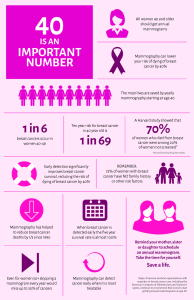Breast cancer is a prevalent and potentially life-threatening disease that affects millions of women worldwide. The key to improving survival rates and successful treatment lies in early detection. Electronic Medical Record (EMR) software helps with screening and early diagnosis. In this blog, we will explore the significant impact of EMR software in the early detection of breast cancer, ultimately improving patient outcomes and the quality of care.
The Challenge of Breast Cancer
Breast cancer is a formidable adversary, with its incidence on the rise globally. According to the World Health Organization (WHO), breast cancer is the most common cancer among women, affecting both developed and developing countries. Early detection and timely intervention are critical to improving survival rates and patient outcomes.
The Role of EMR Software in Breast Cancer Care
Electronic Medical Record software has transformed the way healthcare is delivered and managed. EMR systems enable healthcare providers to create, store, and manage patient health records digitally. They offer several features that have proven to be invaluable in breast cancer detection and management:
1. Centralized and Accessible Patient Records:
EMR software stores a patient’s complete medical history, including previous mammograms, biopsies, and other relevant information. This centralized repository ensures that all healthcare providers involved in a patient’s care have access to the same, up-to-date information. This is essential for continuity of care and early detection.
2. Integration with Imaging and Lab Systems:
EMR software can seamlessly integrate with radiology and laboratory information systems. This integration allows for the immediate retrieval and analysis of mammography reports and other breast cancer screening tests. It reduces the chances of data errors and ensures that healthcare providers can quickly identify abnormalities.
3. Decision Support Tools:
Many EMR systems come equipped with decision support tools that offer reminders and clinical guidelines. These tools assist healthcare providers in adhering to recommended breast cancer screening protocols and follow-up procedures. They can help ensure that no screening opportunities are missed.
4. Enhanced Data Analysis:
EMR software facilitates the analysis of patient data over time. This means that trends and patterns can be identified, helping healthcare providers spot changes in breast health or risk factors early on.
How EMR Software Facilitates Early Detection
Now, let’s delve into the specific ways in which EMR software plays a pivotal role in the early detection of breast cancer.
1. Streamlined and Timely Documentation:
EMR software enables healthcare providers to document patient encounters efficiently. This includes recording mammogram results, clinical breast exams, and breast health history. Timely and accurate documentation is crucial for tracking any changes or abnormalities that could indicate breast cancer.
2. Reminders and Alerts:
EMR systems are designed to send automated reminders and alerts to both healthcare providers and patients. These reminders ensure that regular breast cancer screenings are not overlooked. When a patient is due for a mammogram or clinical breast exam, the system can send notifications to schedule the necessary appointments.
3. Efficient Data Retrieval:
With the integration of imaging and laboratory systems, EMR software allows for quick and easy access to mammography and biopsy reports. This is particularly beneficial when healthcare providers need to review past screening results and compare them with the current findings.
4. Risk Assessment and Profiling:
EMR software can incorporate tools for breast cancer risk assessment. These tools consider various factors, including family history, genetic predisposition, and lifestyle choices. Healthcare providers can use this information to identify patients at higher risk and recommend more frequent screenings or genetic testing.
5. Improved Communication:
EMR software facilitates effective communication by allowing specialists, primary care physicians, radiologists, and other professionals to collaborate seamlessly. They can share information, exchange notes, and discuss cases electronically, ensuring that nothing falls through the cracks.
6. Patient Engagement and Education:
EMR software can also empower patients to take a proactive role in their breast health. It provides a platform for delivering educational materials and resources. Patients can access information about breast self-exams, mammography, and the importance of regular screenings.
Real-World Success Stories
The impact of EMR software on early breast cancer detection is not theoretical; it has tangible results. Several healthcare institutions and practices have reported significant improvements in breast cancer detection and management due to the implementation of EMR systems:
1. Cleveland Clinic:
The Cleveland Clinic, a leading U.S. medical center, implemented EMR software with advanced decision support tools. They reported a 17% increase in early-stage breast cancer detection, which is critical for successful treatment and improved outcomes.
2. Kaiser Permanente:
Kaiser Permanente, a renowned healthcare organization, used EMR systems to streamline the tracking of breast cancer screening among its patients. As a result, they achieved a substantial increase in mammography rates, enhancing early detection and early treatment.
3. Mayo Clinic:
The Mayo Clinic, a world-renowned healthcare institution, incorporated EMR software with advanced imaging integration. This allowed them to access mammography results quickly and led to earlier interventions and improved patient outcomes.
Challenges and Considerations
While EMR software has proven to be a valuable tool in early breast cancer detection, it’s essential to acknowledge some challenges and considerations:
1. Data Accuracy:
The accuracy of the data entered into the EMR system is paramount. Errors or omissions in patient records can lead to missed screening opportunities or misdiagnoses.
2. Data Privacy and Security:
EMR systems contain sensitive patient information. Ensuring data privacy and security is critical to compliance with regulations like HIPAA.
3. Usability and Training:
Healthcare providers and staff need to be proficient in using the EMR system effectively. Comprehensive training is crucial to maximize the benefits of the software.
4. Interoperability:
Effective integration with imaging and laboratory systems is essential for seamless access to screening results. The interoperability of these systems is a crucial consideration.









